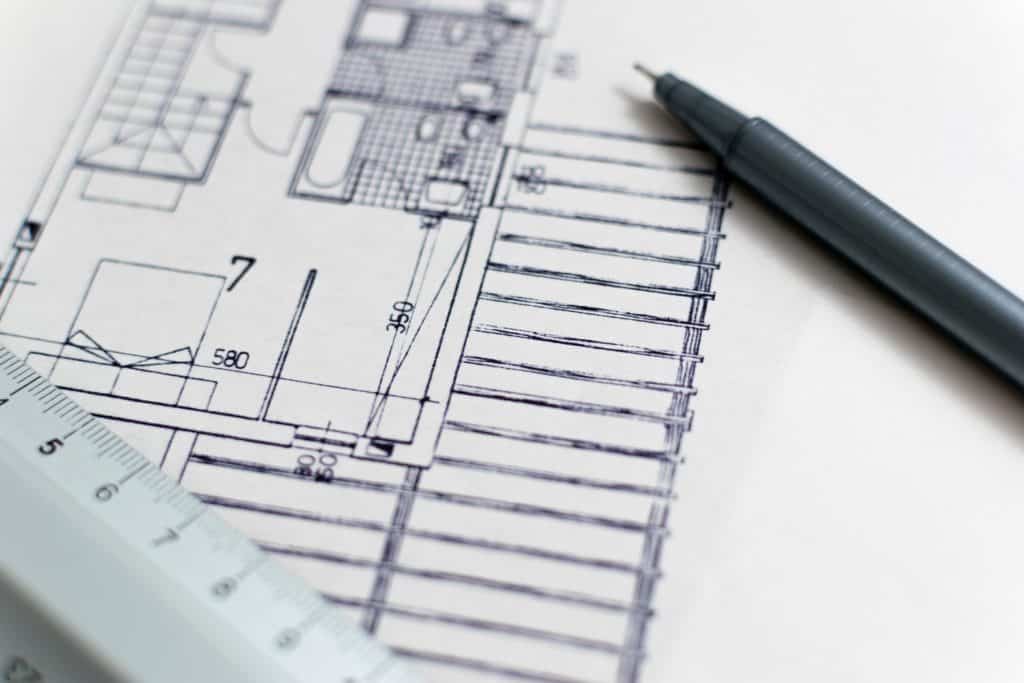In the advent of the technological advancements that have taken place over the last several decades, the construction industry has also benefited in many ways, namely through the innovations enabled by cost estimating software. construction estimating software has positively affected the way professionals conduct their business and achieve their goals, providing a streamlined approach that gives forward-thinking companies an edge over the competition.
Since they have appeared on the market, construction estimating software systems have become increasingly more intuitive, allowing industry professionals to choose task-specific programs and customized platforms to create estimates.
Designed to help the estimator make intelligent decisions by automatically adjusting labor units, construction estimating software calculates the installation difficulty factor for each item based on the task rather than using one factor straight across the board. This allows for more in-depth research and date procurement, thus enabling accuracy and less margin for errors.
Research has also shown that the majority of today’s construction contractors are using software versus more traditional forms of estimating, such as spreadsheets or manual documentation – more and more, businesses are recognizing the value of using construction estimating software, even if it adds an additional cost to their expenditures. By saving time, they find they are also saving valuable resources, as well as benefiting from the convenience of this advanced and task-specific product.
Table of Contents
Discovering The Advantages Of Construction Estimating Software: Top 8 Benefits
As we’ve discussed, construction cost estimation software systems have grown in popularity, and it’s no mystery why – the benefits of a highly-efficient estimating solution provide value on numerous levels. By adjusting labor units and estimating installation difficulty factors per installation of each specific tasks, they offer your business a quantifiable edge. Below, a list of reasons to consider using construction estimation software for your company:
Accuracy
In today’s competitive market and fluctuating economy, it’s never been more critical for businesses to keep track of subcontractor expenditures, actual labor burden, equipment costs, material costs and other budgetary matters. Estimating software provides companies with the tools to track essential data, such as stored materials, back orders and other issues related to a recent build. Construction estimating software allows your business to establish a job’s closest true cost, providing cost accuracy for projects while pinpointing labor costs and the total volume of materials needed.
Better Project Management
Yet another invaluable asset, cost estimating software also allows for better project management. Your entire team can align their operations more efficiently with construction estimation software – procurements and purchases become more cost-effective, correspondence is clearer and more cohesive, and most importantly, tracking items becomes seamless and noticeably more efficient. In fact, research has shown that most professional contractors prefer cost estimation software over other modes of cost estimating, as it enables them to stay organized and optimize their time management and workflow.
Consistency
When using a construction estimating software system, your business will be able to create estimates that utilize similar procedures every time you begin a new project. This allows for consistency across all project scopes – by using the same procedures, formulas and estimation tools every time, you can rest assured your data will be consistent and reliable. In addition, there are software options that maintain a database of costs and prices that may be updated as required, providing your cost estimator with valuable tools they can use in the future, avoiding costly build overruns. Such features make it possible to cross-analyze past projects, establish a feasible construction time-frame, and implement streamlined systems and best practices.

Convenience
If you haven’t implemented a cost estimating software program into your business, there has never been a better time than now. As any professional knows, keeping track of incurring expenses related to material, equipment, labor and the overall cost of a project requires constant maintenance. Construction cost estimation software gives you the closest estimate of cost for a particular project, allowing for an accurate perspective on any given construction project. It also offers a myriad of convenience – besides the accuracy it provides, it also allows you to communicate and edit projects virtually, further enabling your team’s ability to track your project’s success with ease.
Efficiency
One of the most significant benefits of using computerized estimating software is the speed it delivers. Using a digital estimation software product will provide an efficient way to process your estimates, track your company’s projects, put more quotes out into the marketplace, win more bids, and dedicate more time to other important aspects of your business. By saving your company valuable time and money, the initial investment of purchasing a professional cost estimating software program will be well worth the expense in the long run.
Integration
Another benefit of estimating software is the ability to integrate your work with other key software solutions for your company, enabling you to not only streamline your workflow, but reduce the replication of data.
Professionalism
In addition to delivering speed, accuracy, consistency and integration features, cost estimating software can also elevate your company to a level of professionalism that sets you apart from your competitors. In an age that thrives on competition, estimating software can give you a notable edge, freeing you from the cumbersome modes of outdated technology. By allowing you to create professional quotes and reports, cost estimating software will reinforce your customers’ confidence in your business while improving your overall image. You can also generate customizable reports to include specific information, and personalize collateral to match your unique brand or marketing strategy.
Procurement
Estimating software also assists in measuring the delivery time of materials, and allows contractors to manage and schedule their labor more effectively. This information outlines what materials, equipment, and labor resources will be needed, and prevents wasted energy resources. Subsequently, these savings translate positively to the client.
Pro Tip: Patience Is A Virtue
For most people, learning anything new typically requires a certain degree of patience – and time. In the instance that it’s your first time using a cost estimating software program, it’s important to keep this in mind when you’re learning the ins & outs. Although it may initially seem like a minor inconvenience, particularly if you’re a bustling business, the long term value is worth the short-term setback.
Getting your team onboard with a cost estimating software program may also take some time and effort. You may have some very tech-savvy people among your group, and some who may struggle with the learning curve. Again, this means you’ll have to spend more time working with the technology you adopt to ensure you capitalize on your investment. Remain diligent and if possible, offer one-on-one or group tutorials to familiarize your staff with this invaluable system. In most cases, your provider will provide technical support and guidance to help your group ease into the transition and become comfortable with your new estimating software program.

Construction Cost Estimating: Best Practices
Although today’s modern software applications make cost estimation much easier than it used to be, the cost estimator’s role remains as crucial as ever. While a professional cost estimating software program can streamline the estimation process, there are still certain best practices that should be executed by an expert cost estimator. If adhered to, these practices can lead to more accurate estimates, and ideally, more successful bids. Below, a list of best practices to keep in mind for your company:
Following Industry Standards
It is imperative that the cost estimator closely follows industry norms and standards for measurement units. This individual must also consistently fill out costing-related documents (such as quantity surveys) and follow cost-recording procedures in a way that makes their work verifiable and easy to share with another cost estimator, if necessary. Therefore, using a recognized construction classification system, such as the UniFormat, is highly recommended.
Identifying Indirect Costs
Another essential part of the cost estimator’s job includes identifying indirect costs; because this is a task that requires experience, it should only be left to a professional estimator. The estimator will first examine contractual terms to determine which of them may impact indirect expenditures. They are also responsible for calculating indirect costs, as well as figuring out a way to record such data. Determining the level of effort – i.e., project work that cannot be traced to specific elements of work breakdown structure – is also a specialized skill that requires the experience of a competent estimator. Estimating the labor hours needed for completing project tasks affects the size of the workforce, workers’ wages, and insurance; for that reason, it’s a crucial component of best practices.
Evaluating Subcontractors’ Bids
The estimator is also responsible for evaluating subcontractors’ bids, particularly taking into account the subcontractors’ performance on past projects. They will review construction drawings for precision and constructability, as well as representing the project scope. Additionally, they will assess how the client’s schedule requirements impact the performance of the project. Their job may also entail analyzing completed estimates for accuracy.
Tracking Field Costs
The cost estimator also helps track costs in the field, allowing for the comparison of actual costs against cost estimates. The purpose is to identify which areas of the estimate are accurate, which weren’t, and why. They are also responsible for determining the impact of change orders, so contractors and clients can determine if these are feasible. A skilled estimator will provide as much detail as possible on the impact of changed orders.
Ultimately, the cost estimator may have to exercise specialized skills, such as value engineering, which usually refers to increasing the function-to-cost ratio. Value engineering is often a separate study, and it’s critical to structure an estimate so you can swap out costs and assess the effect of value engineering. If you don’t allocate costs to construction divisions in a format that’s easy to understand, gauging the impact of value engineering can become much more difficult.

Summary
Most businesses use some form of software and technology to streamline their workflow, and as we’ve explored in this article, cost estimating software is one of the most beneficial systems to anyone working within the construction industry. Research has shown that ongoing advances in technology and software systems support better business practices, further enabling companies to boost efficiency while saving valuable time and money.
In addition, studies indicate that many of today’s contractors are using software instead of doing everything by hand, as they recognize the value of construction estimating software tools for their business. By providing an accurate, consistent, professional, quick and easy-to-use form of technology, this software will only continue to increase in popularity as it allows for maximum productivity while minimizing human error.
Because we live in a time where the economy is always shifting, it has never been more crucial for businesses to keep diligent records of their expenditures – whether tracking incurring costs related to labor, material or equipment, the total cost of a project needs to continuously monitored. Professional construction cost estimation software provides the closest estimate of cost for a specific project. In turn, it gives businesses a more accurate perspective about their construction project.
Along with accuracy, construction cost estimation software also ensures consistency by utilizing the same procedures and estimation tools each time. Based on saved data, your company can then compare the success rate of the model and make required changes for future projects. A history of job costs can also be maintained, thus resulting in a process that is formulaic and relatively error-free.

